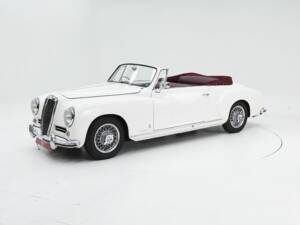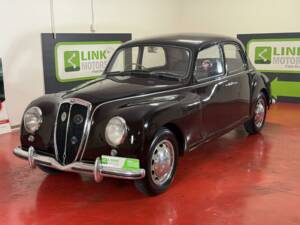Lancia Aurelia Classic Cars for Sale
The Lancia Aurelia is a pivotal Italian Gran Turismo, produced from 1950 to 1958 in several distinctive body styles. Developed under Vittorio Jano, it was the world’s first production car fitted with a V6 engine and stood out for its engineering innovation, motorsport pedigree, and elegant design language typical of 1950s Italian craftsmanship. Discover the Aurelia’s compelling variety, technical details, and fascinating model history below.
Search results
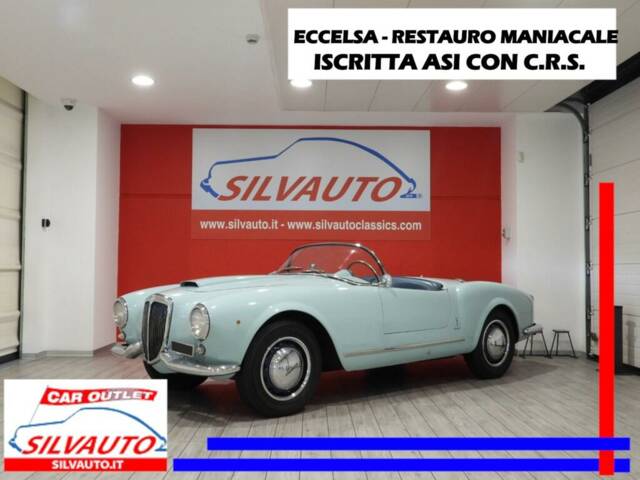
1955 | Lancia Aurelia B24S Spider "America"
LANCIA AURELIA B24 S SPIDER ”AMERICA” GUIDA SINISTRA – ISCRITTA ASI CON C.R.S. – RARISSIMA – RESTAURO MANIACALE – ECCELSE CONDIZIONI – SUPERPREZZO (1955)

1951 | Lancia Aurelia B50
1951 Lancia Aurelia B50 Cabriolet '51
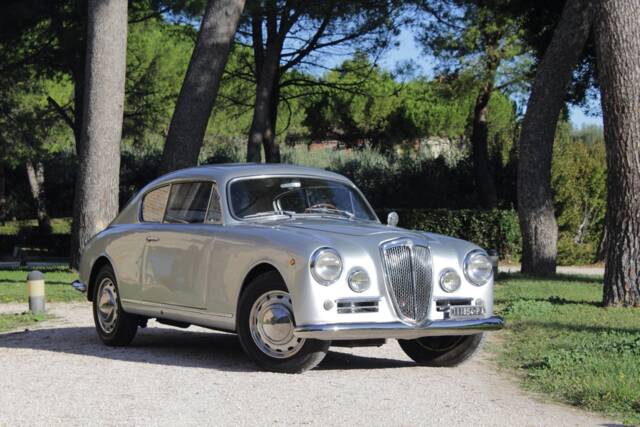
1957 | Lancia Aurelia B20 GT 2500
Lancia Aurelia B20S VI Serie (1957 – imm. 1958)

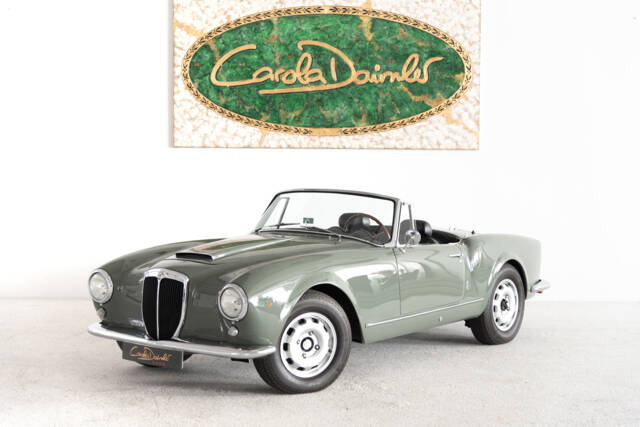
1957 | Lancia Aurelia B24 Convertible
Lancia Aurelia (B24-S) Convertible | Good documentation | 1 of 521 | Klaus Kukuk report grade 2+ | Italian initial delivery | Aurelia register record
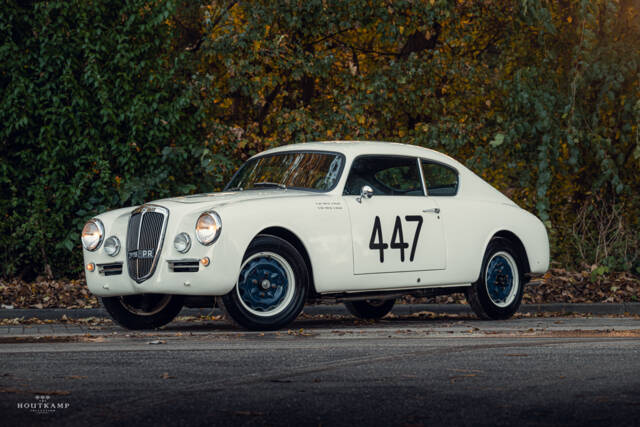
1955 | Lancia Aurelia B20 GT 2500
A former Mille Miglia racer, it has participated in the 1955 and 1956 Mille Miglia
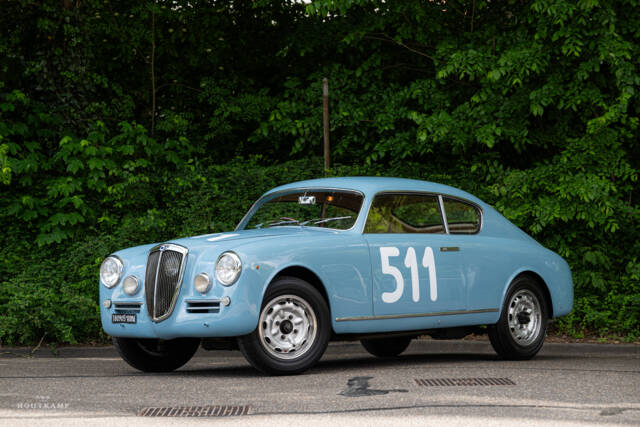
1953 | Lancia Aurelia B20 GT
Veteran car Mille Miglia 1956
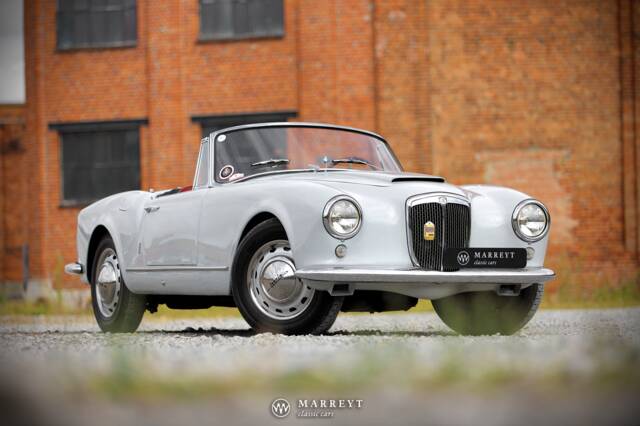
1957 | Lancia Aurelia B24 Convertible
Lancia Aurelia B24S Convertible 1957
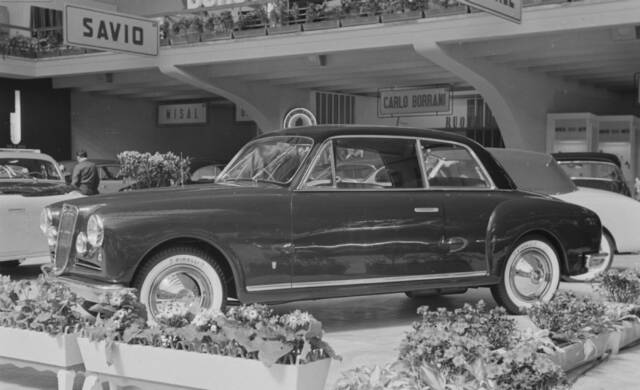
1950 | Lancia Aurelia B50
Lancia Aurelia B50 Bertone disegno Michelotti, unico esemplare rimasto dei due realizzati.
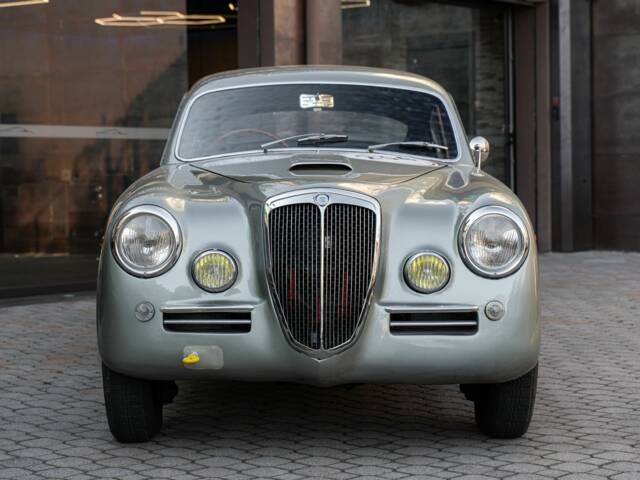
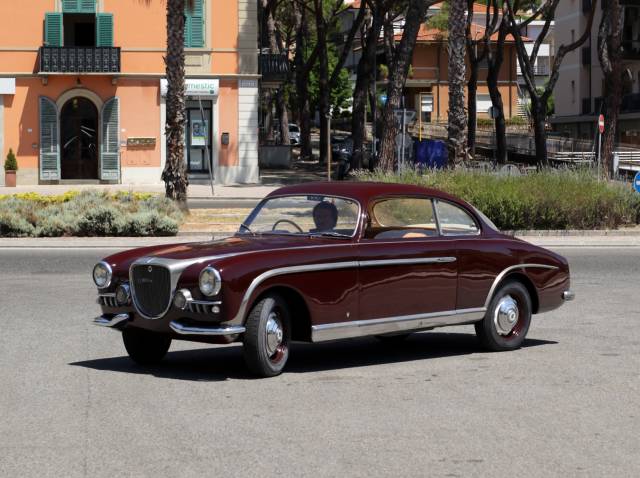
1950 | Lancia Aurelia B50
Lancia Aurelia B50 Vignale 1950
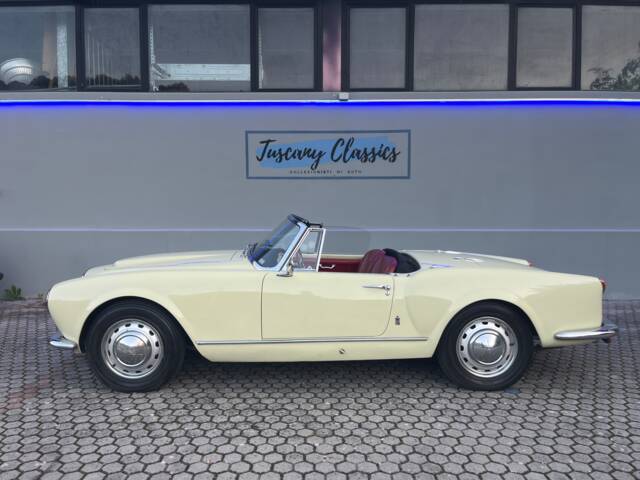
1958 | Lancia Aurelia B24 Convertible
Conservata originale
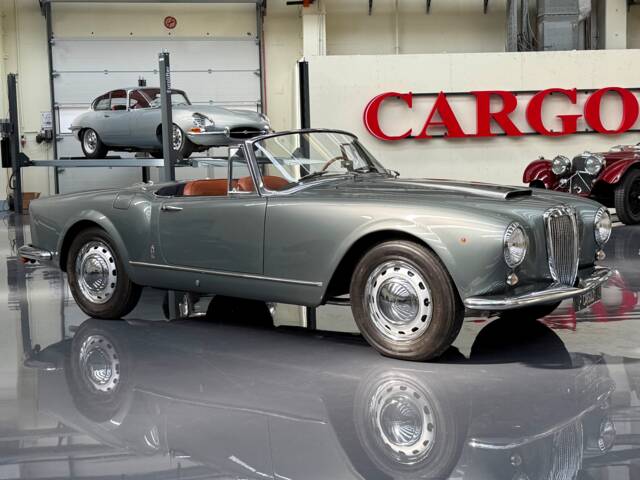
1958 | Lancia Aurelia B24 Convertible
Matching Numbers
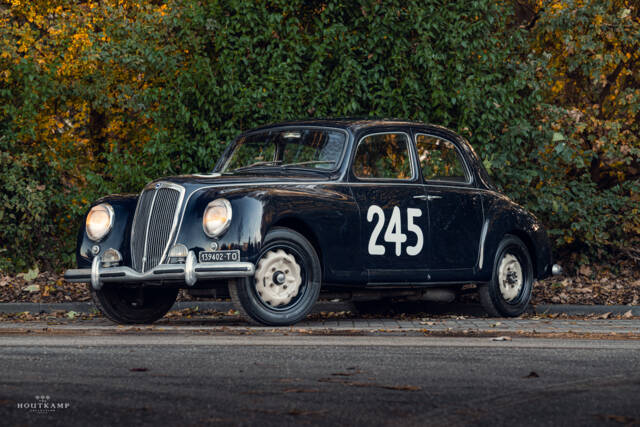
1952 | Lancia Aurelia B22
An extremely rare example, documented participant in the 1953 Mille Miglia race
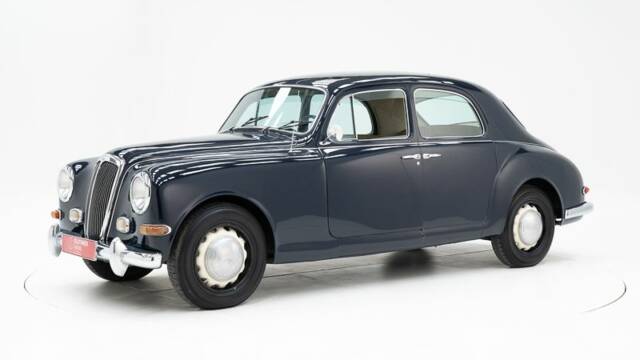
1955 | Lancia Aurelia B12
1955 Lancia Aurelia B12 '55
History of the Lancia Aurelia
Launched in 1950, the Aurelia marked Lancia’s drive for technical progress. It was named after the ancient Roman Via Aurelia and engineered by Vittorio Jano with Francesco de Virgilio. The model introduced the world’s first series-produced V6 – a 1.8-litre alloy engine, later reaching up to 2.5 litres. Over eight years (1950–1958), Lancia developed six Aurelia series, refining chassis, suspension, and performance along the way. Early innovations included the unification of clutch, gearbox, and differential (transaxle) at the rear axle, delivering outstanding road holding and balance. The Aurelia was integral in Italian and international rallying, winning class victories at Mille Miglia, Le Mans, and Targa Florio. By the time production ended in 1958, more than 18,000 examples had been built, setting style and technical standards for postwar Lancias and their era.
Model History
The Aurelia replaced the Aprilia and was itself succeeded by the Flaminia after 1958. Its first version, the B10 Berlina, debuted with a 56 PS V6. The B21 featured a 1.9-litre engine and the B22 pushed output to 80 PS. The B20 GT coupé, with styling co-developed by Ghia and Pininfarina, converted the Aurelia into a pure-bred Gran Turismo for road and competition, receiving continual mechanical and aesthetic upgrades with each series. The Spider America (B24) in 1954 was engineered specifically for export to the US – purposely stripped-down, minimal, but highly exclusive. The Convertible (B24S) followed, offering greater comfort and practicality. Across six series, technical advancements included an innovative De Dion rear axle from the fourth series and the eventual adoption of left-hand drive for broader export opportunities. Each variant was shaped by leading coachbuilders: Pininfarina, Farina, Ghia, and others, giving rise to unique bodywork and luxury finishes.
Highlights and Market Profile
The Lancia Aurelia is a technological trailblazer: the first series V6 production engine, pioneering radial tyres, and a transaxle layout for near-perfect weight distribution. Its sliding pillar front suspension and rear De Dion setup (from fourth series) dramatically improved dynamic stability. Standout special body styles – the Spider America and B20 GT coupés – are especially prized for their scarcity, engineering, and motorsport legacy. The handcrafted nature of each vehicle, combined with Italian styling and technical advancement, set the Aurelia apart among postwar European cars.
Technical Data
Special Editions and Collectible Models
Notable editions include the Aurelia B24 Spider America (1954–1955, just 240 built), focused on the US market with ultra-minimalist spec, and only 59 right-hand-drive units. The B24S Convertible (1956–1958) came with greater weather protection, roll-up windows, and more convenience features, at a production run of 521. The B20 GT Series VI (only 312 produced in 1958) is prized for its mature development and refinement. Early GT Series I/II versions (lightweight, 2-litre engine, best handling) also attract collector attention. Ultra-rare cabriolets (B50/B51, 1950–52) and coachbuilt cars by Farina or Viotti further elevate Aurelia exclusivity.
Weak Spots and Common Issues
Given the advanced engineering for its time, Aurelias require careful maintenance of the V6’s aluminium block (coolant and oil passages), regular attention to the De Dion rear and transaxle assemblies, and prompt service of drum brakes (especially internal rear brakes). Sliding pillar suspensions need regular lubrication and technical expertise. Bodywork was of high quality, but rust protection was limited by period standards. Parts procurement for rare variants and interior trim, especially original wool or ‘Panno Lenci’ fabrics, can be challenging.
Engine, Transmission and Road Behaviour
The Aurelia’s hallmark is balanced, precise handling from its rear transaxle layout and fully independent suspension. The V6 delivers strong, flexible power: 56–80 PS in early saloons, rising to 112–118 PS in later coupés and spiders. Top speeds up to 180 km/h (B20 GT Series) were competitive for the era. Four-speed manual transmission with either column or floor (later Nardi) shift provides direct engagement. Early lightweight coupés (Series I/II) offer more agile handling, while Series IV onwards benefit from the advanced De Dion rear axle for increased stability and ride comfort. - B10 (Berlina, 1,754 cm³, 56 PS)
- B20 GT Series I/II (1,991 cm³, up to 80 PS, aluminium detailing, best weight distribution)
- B20 GT Series IV–VI (2,451 cm³, up to 112 PS, De Dion rear axle, fine-tuned transmission)
- B24 Spider America (2,451 cm³, 108 PS, minimalist, open-air motoring)
- B24S Convertible (2,451 cm³, 112 PS, more comfort and practicality)
- B12 Berlina (2,266 cm³, 87 PS, luxury four-seater)
- B50/B51 Cabriolet (1,754 cm³, coachbuilt, highly limited)
Design: Interior, Comfort, Exterior and Details
The Lancia Aurelia’s design embodies 1950s Italian sophistication: understated profiles, carefully curved fenders, flowing lines and minimal ornamentation. Ghia created the pure form of the B20 coupé, realised by Pininfarina in production; Pininfarina also handled the elegant B24s. Early Berlinas have a more staid, upright appearance, while the spiders and convertibles emphasise Mediterranean openness and sportiness. Special features include original Nardi wood steering wheels, Borrani wire wheels, and premium wool/leather/‘Panno Lenci’ interiors. Series and coachbuilder variations result in unique finishes and accessories – from minimalist dashboards and side-screens (Spider America) to plush, wool-upholstered cabins in B12 limousines. Accessories such as Jaeger or Veglia clocks and instrumentation round out the Italian attention to detail.
Other Noteworthy Features
Each Aurelia is a handmade or semi-handmade vehicle, often differing in detail and trim according to coachbuilder and year. Many cars are eligible for historic motorsport and events such as Mille Miglia. Spares and period-correct restoration can be a rewarding challenge given the bespoke nature of many components and interiors. Some Aurelias, particularly the spiders and convertibles, were built specifically for export markets – notably the US, often appearing in period films and pop culture.
Summary
The Lancia Aurelia stands as the model that defined postwar Italian grand touring innovation. Technical firsts, competitive motorsport results, wide variety of collectible series and coachbuilt forms, and a design language that set new standards in style and engineering – all combine to make the Aurelia a central pillar of mid-century European automotive history.

